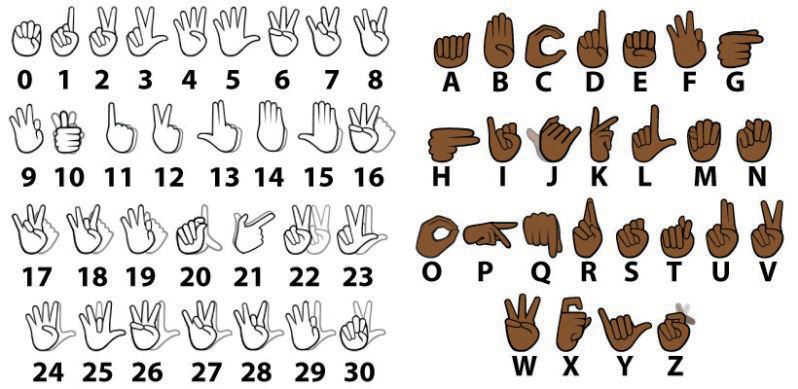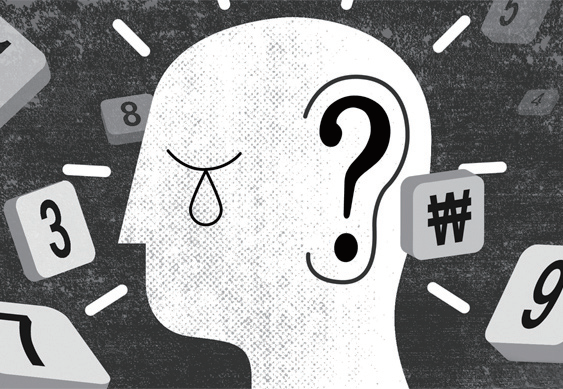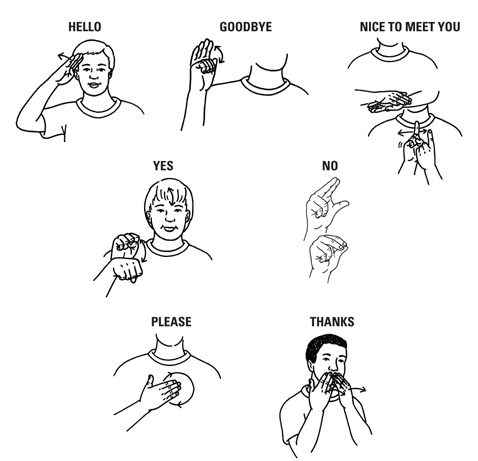Have you ever learned sign language? Or do you have an acquaintance whose main communication method is sign language? Most people consider sign language to be a communication method only for the hearing-impaired or people with speech disorders. Sign language, however can be a passage of communication that bridges a language barrier in a multiracial nation. Recently, a movement that sublimates sign language to a work of art by depicting the sign language motions has also been gradually activated. The Sungkyun Times (SKT) informs the necessity of sign language along with the inconveniences of deaf-mutes, and covers the tasks ahead that should be tackled in order to improve deaf-mutes’ rights.
Introduction of Deaf-Mutism
Deaf-Mutism, What Is It?
In a broad sense, deaf-mutism is an impairment that affects both hearing and speaking. To be more specific, people who cannot phonate due to hearing impairments are considered to be in a state of deaf-mutism. According to the Ministry of Health and Welfare, as of 2015, 27 million citizens were suffering from deaf-mutism. Although they vary depending on the severity of the hearing impairment, there are four main methods through which deaf-mutes communicate.
Ways Deaf-Mutes Communicate
The methods are mainly classified into four different ways, shown in the following chart.
| Conversation by writing: Asking and answering questions by writing | Speech reading: To read language visually, watching the movements of speaker’s mouth |
| Oral method: Communication method that is implemented by phonation | Sign language: Movement of hands and arms used to communicate instead of phonation |
There are more detailed explanations that derive from the above four methods.
| Manual method: It is often called a comprehensive language in that it includes the movement and location of fingers and arms, and even the motion of lips and facial expressions. | Oralism: Method used to teach deaf-mutes how to phonate after understanding the speaker’s lip movements, using residual hearing. What is distinctive about oralism is that it does not stop at simply imitating the shape of the speaker’s mouth, but actually leads to phonation. |
| Simultaneous method: A method that use both the oral method and manual method at the same time. It is usually used when deaf-mutes have difficulty phonating the words properly. | Rochester method: An education method that induces deaf-mutes to gradually phonate and learn languages, starting from finger spelling. |

Why Is Sign Language Necessary?
Limitations of Other Communication Methods
Writing is often considered to be just enough to communicate with deaf-mutes. There are indeed some cases where conversation through the writing method is effective, if the deaf-mute has received formal education. In most cases, however, deaf-mutes have trouble expressing their thought into words. In the case of speech reading, problems arise due to homonyms and the fact that speech reading is only suitable for extremely short and simple terms. In order to master spoken language, deaf-mutes must go through vocal exercises which are nearly impossible for them to learn. Especially for a deaf-mute who experiences hearing loss that cannot be helped with a hearing aid, oralism is not suitable in the first place, as they have never heard how people pronounce words and they do not know how to differentiate between certain intonations.
For Human Rights
Historically, deaf education has the longest tradition compared to other special educations. Deaf education was first implemented in 1760 by De L’Eppe, who established a school for deaf-mutes in France and offered them sign language education. Nevertheless, deaf-mutes were discriminated against due to prejudice and superstitions, which hindered deaf education from being accepted as formal education.
As time passed, a number of hearing-impaired heroes like Helen Keller, who graduated from Harvard Radcliffe College as an honor student, proved the efficiency of sign language education. Influenced by his deaf-mute mother, one of the most renowned inventors, Bell, also established a school for deaf-mutes and tried hard to spread sign language education. Along with the effort of such people, the development of science such as the invention of the hearing aid and auditory training technology contributed to the rise of sign language’s standing at the end of the 19th century. These days, sign language is expected to be an integrated education which helps deaf-mutes to lead life as a member of society. By maximizing their sign language skills, deaf-mutes can become experts in their unique fields. Sign language is an effective form of communication not only between deaf-mutes, but also between deaf-mutes and abled people. If there is an unexpected conflict with other people, sign language can be a mean for deaf-mutes to express their stance and protect themselves.
Incomplete Settlement of Sign Language in Daily Lives for Deaf-Mutes
Law
Since August 4, 2016, the Korean Sign Language Law, meant to provide a foundation for the development of sign language and improve the quality of sign language users’ lives, has first been implemented. The law states that sign language is an official language among deaf-mutes in Korea and guarantees deaf-mutes’ rights for information access, education, and language. Furthermore, the law includes the continuous research of sign language and the establishment of education for deaf-mutes to improve their sign language and Korean language proficiency. The law also specifies certain designation requirements for sign language institutes to promote Korean sign language propagation. Nevertheless, strong criticisms are arising following the implementation of the law. There are a few reasons why people are in distrust of this law. Firstly, when the government started to draft the law, it simply took the Framework Act on the National Language as it is, focusing on abled people. Therefore, some people insist that the law does not seem to be concerning deaf-mutism. Secondly, because the Korean Sign Language Law concentrates only on education and related institutions, it seems to be a legislation regulating sign language education, rather than a law focusing on sign language and its users. Adding to these problems, there is a lack of permanent organizations that play the role of deliberation and propagation.

Lack of Human Resources
Insufficient human resources are also a serious problem. For instance, in Yongsan District, there are over 900 deaf-mutes, but there are only three sign language interpreters assigned to the related organizations. These interpreters also need to help other areas’ deaf-mutes who come to Yongsan District to manage various tasks, according to the operation provision. On a city level, there are only five interpreters available at nights and on weekends in the entirety of Seoul, so the range of work that one interpreter must handle is broad. Additionally, some necessary institutions such as hospitals, banks, and government offices do not hire sign language interpreters, so the deaf-mutes have difficulty dealing with urgent tasks. Even worse, in special schools, the percentage of teachers who have sign language interpretation qualifications is only six percent. Therefore, sometimes, classes are proceeded just by drawing pictures or playing games, not learning new lessons. Even when deaf-mutes face difficulties in school, they do not turn to their teachers for help, and lose their desire to chase their dreams because sign language communication is not smooth.
Ways to Go Forward
Preservation of Sign Language Along with Bringing Deaf-Mutes Better Life
To preserve sign language, a continuous monitoring system must be established to check broadcasts which deliver inaccurate sign languages interpretations. To enhance the quality of deaf-mutes’ lives, the awareness should also be significantly improved. There are some parents who are worrying about the discrimination that could harass their deaf-mute children. The parents believe that if their deaf-mute children use sign language, abled people will discriminate against them. Furthermore, it is really important to incorporate sign language into society by making related textbooks and reinforcing the labor force like sign language teachers or interpreters. Recently, CGV, a Korean film distributor, has screened Train to Busan and Princess Deokhye in barrier-free versions, which have interpretation or sign language in a separate, smaller screen, albeit with insufficient installation. To reduce the inconvenience for deaf-mutes, cultural facilities like movie theaters should establish additional space for screen barrier-free movies. Meanwhile, the most important and simplest thing that abled people can do for deaf-mutes is to understand the frustration that deaf-mutes feel and wait for them to fully express themselves.
Notifications for Correct Sign Language Use
❶ The sign language motion should be ideally implemented at the range from chest height to both shoulders in a modest way.
❷ When using the finger sign language, you have to use only your right hand and do the motions slowly and clearly.
❸ In sign language, there are no honorifics, so you have to show politeness through your position and facial expressions.
❹ According to the location and direction of the hands, the gestures can take the opposite meaning of a word, so you have to be well informed on the location and direction of the hands.

The law which should have been passed and enforced long ago for deaf-mutes’ rights finally has been implemented on August 4 of this year. Although the voices of concern also exist, it is meaningful that a law was legislated for deaf-mutes’ right. It would be necessary to sublimate the attitude of indifference toward deaf-mutism and cultivate the attitude of acceptance towards sign language as another official language. The significance of this law does not come from the simple fact that it was passed, but rather from the roles of people who are going to conform to this law. Each individual’s little attention will have a positive influence on society.
